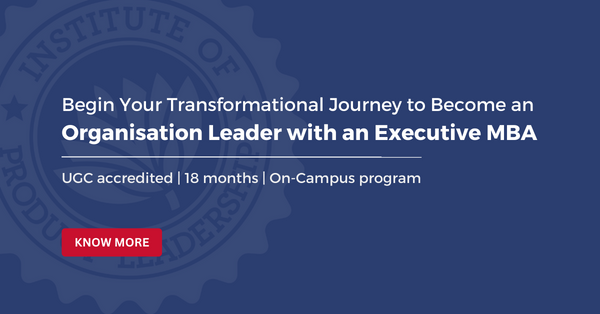Unlocking Success:
A Comprehensive Guide to Go-to-Market Strategy
- October 30, 2023
- blogs
- 5 min read
Launching a new product into the market can be both exciting and challenging. The key to navigating this journey successfully lies in a well-crafted go-to-market (GTM) strategy. In this guide, we will explore the intricacies of go-to-market strategies, from the fundamental frameworks to real-world examples, providing you with the insights needed to unlock success in your product launch.
Key Takeaways:
- A technical background is not a mandatory prerequisite for a successful career in product management; professionals from diverse backgrounds can excel in this field.
- In this blog, we delve into the skills and techniques that professionals from diverse backgrounds should harness to excel in product management.
- Here we will also explore the reasons for any professional to consider the Institute of Product Leadership (IPL) for their executive MBA program.
Understanding Go-to-Market Strategy
Before delving into the specifics, let’s establish a clear understanding of what a go-to-market strategy entails.
Definition of Go-to-Market Strategy:
A go-to-market strategy is a holistic plan that outlines how a company will bring its product to market, from initial launch to ongoing promotion and sales. It serves as a roadmap, guiding every aspect of the product’s introduction and positioning in the market.
The Five Key Go-to-Market Strategies
A successful go-to-market strategy can take various forms. Here are five commonly employed strategies:
1. Direct Sales Approach:
Involves selling the product directly to the end-user without intermediaries.
Ideal for products with a complex sales process or high-touch customer engagement.
2. Channel Sales Strategy:
Utilizes third-party channels, such as distributors or retailers, to reach the end consumer.
Effective for broad market reach and leveraging existing distribution networks.
3. Freemium Model:
Offers a basic version of the product for free, with premium features available for a fee.
Drives user adoption and allows for monetization through advanced features.
4. Strategic Alliances:
Involves partnering with other companies to leverage their customer base and distribution channels. Particularly useful for entering new markets or reaching niche audiences.
5. Online Sales and E-commerce:
Focuses on leveraging online platforms for product sales.
Ideal for products with a strong digital presence and a tech-savvy target audience.
The Three Main Parts of GTM: Breaking Down the Components
A successful go-to-market strategy typically consists of three main components:
1. Market Analysis:
Understand market demand and identify gaps the new product can fill.
Analyze competitor products and assess market saturation.
2. Customer Segmentation:
Identifying and categorizing the target audience based on shared characteristics.
Tailoring marketing and sales approaches to specific customer segments.
3. Positioning and Messaging:
Developing a compelling brand message and positioning that resonates with the target audience.Crafting clear and persuasive communication to differentiate the product in the market.
Crafting a Go-to-Market Strategy for New Products: A Blueprint for Success
1. Market Research:
Understand market demand and identify gaps the new product can fill.
Analyze competitor products and assess market saturation.
2. Define Target Audience:
Clearly define the ideal customer profile for the new product.
Identify key demographics, behaviors, and preferences of the target audience.
3. Unique Selling Proposition (USP):
Clearly articulate what sets the new product apart from competitors.
Communicate the unique value proposition that addresses customer needs.
4. Channel Selection:
Choose the most effective distribution channels for reaching the target audience.
Consider both online and offline channels based on customer behavior.
5. Marketing and Promotion:
Develop a comprehensive marketing plan that utilizes various channels.
Leverage digital marketing, social media, and traditional advertising.
Go-to-Market Strategy Framework: Building a Solid Foundation
A robust go-to-market strategy framework serves as the backbone of a successful product launch. Consider the following framework components:
1. Objectives and Goals:
Clearly define the objectives of the go-to-market strategy.
Set measurable goals to evaluate the strategy’s success.
2. Sales and Distribution Plan:
Outline the sales approach and distribution channels.
Define sales targets and metrics for performance evaluation.
3. Marketing Plan:
Develop a comprehensive marketing plan that aligns with the overall strategy.
Include online and offline marketing channels for maximum reach.
4. Customer Support and Training:
Establish a plan for customer support and training, ensuring a positive post-purchase experience.
Provide resources for customers to learn and maximize product use.
5. Feedback Mechanism:
Implement a system for collecting and analyzing customer feedback.
Use feedback to iterate and improve the go-to-market strategy continuously.
Product-Led Go-to-Market Strategy: Embracing the Future
The product-led go-to-market strategy is gaining prominence in the digital age. Here’s why it’s worth considering:
1. User-Centric Approach:
Puts the product at the center of the strategy, focusing on user experience and satisfaction.
2. Free Trials and Demos:
Offers free trials or demos to allow users to experience the product before committing.
3. Customer Onboarding:
Prioritizes seamless onboarding processes to enhance user adoption.
Example of a Go-to-Market Strategy: A Case Study
Let’s delve into real-world examples of companies that have employed successful go-to-market strategies:
1. Apple Inc. – Product Launch Excellence:
Apple is renowned for its meticulous go-to-market strategies, especially during product launches. The unveiling of the iPhone is a standout example. Apple creates anticipation through carefully timed teasers and events, generating buzz and curiosity. Their approach involves a blend of exclusive marketing, strategic alliances with mobile carriers, and a strong emphasis on the product’s unique features.
2. Tesla – Direct-to-Consumer Model:
Tesla disrupted the automotive industry by adopting a direct-to-consumer go-to-market strategy. Instead of relying on traditional dealerships, Tesla sells its electric vehicles directly to customers. This approach allows for a closer connection with consumers, control over the customer experience, and the ability to convey the unique aspects of their products, such as the sustainability angle and cutting-edge technology.
3. Slack – Freemium Model Success:
Slack, the team collaboration platform, achieved significant growth through its freemium go-to-market strategy. Offering a free version of their product with limited features, Slack attracted a large user base. As teams experienced the benefits, many opted for the premium version, leading to substantial revenue growth. This freemium model allowed Slack to penetrate the market, gain traction, and convert users into paying customers.
4. Amazon – E-commerce Dominance:
Amazon revolutionized retail through a comprehensive online go-to-market strategy. Leveraging its vast product selection, efficient logistics, and a customer-centric approach, Amazon became the go-to platform for online shopping. Prime membership, one-day shipping, and diverse product categories contribute to Amazon’s dominance in the e-commerce market.
5. Dollar Shave Club – Disruptive Marketing Approach:
Dollar Shave Club disrupted the razor industry with a witty and unconventional go-to-market strategy. Their viral marketing video showcased the company’s value proposition, emphasizing the simplicity of their subscription service and the cost savings compared to traditional razor brands. This approach garnered widespread attention, leading to a surge in subscribers and challenging established players in the market.
6. HubSpot – Inbound Marketing Mastery:
HubSpot transformed the way businesses approach marketing with its inbound marketing methodology. Instead of traditional outbound methods, HubSpot’s go-to-market strategy focuses on creating valuable content that attracts, engages, and delights customers. By providing educational content, tools, and resources, HubSpot positions itself as a thought leader in the marketing and sales software space
In conclusion, a well-defined go-to-market strategy is the key to a successful product launch. By understanding the various strategies, breaking down the components, and leveraging a comprehensive framework, businesses can navigate the complexities of the market and position themselves for success. Remember, a product-led approach and real-world examples can provide valuable insights as you craft your unique go-to-market strategy.
Frequently Asked Questions
The five common go-to-market strategies include direct sales, channel sales, freemium model, strategic alliances, and online sales and e-commerce.
The three main components of a go-to-market strategy are market analysis, customer segmentation, and positioning/messaging.
The six key components of a go-to-market strategy include objectives and goals, sales and distribution plan, marketing plan, customer support and training, feedback mechanism, and a product-led approach.
Explore Our Programs
Institute of Product Leadership is Asia’s First Business School providing accredited degree programs and certification courses exclusively in Product Management, Strategy, and Leadership.
Talk to a counselor today and embark on your journey towards becoming an exceptional product manager.
Whether you’re seeking advice on career paths, looking to enhance your skills, or facing challenges in your current role, our counselors are ready to provide valuable insights and actionable strategies.






